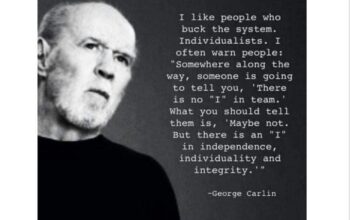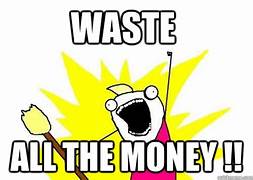California is in a DOOM LOOM. San Jose, San Fran and Los Angeles are the most expensive cities for homes in the nation. The cost of electricity is 102% above the national average. In five years our government schools have lost 400,000 students—with another one million gone in seven years. Texas has a $12 billion surplus—and returning, in property tax cuts, $18 billion back to its citizens. California has a REAL deficit of $80 billion—plus over a trillion dollars in unfunded pension funds and health care costs.
“California’s unemployment rate, 5.2% of its labor force in July, is no longer the nation’s highest after months of having that dubious distinction.
While California’s July rate was unchanged from June, Nevada’s creeped ahead — or behind — with a 5.4% rate, so California is now tied with Illinois for second place among the states.
The jobless rate translates into slightly over 1 million of California’s 19.4 million-person labor force being unemployed. The labor force is defined as adults of working age who either hold jobs or are seeking work.
Firms and families are fleeing, replaced by illegal aliens. Instead of creating revenues the illegal aliens create a cost to the tax payer—along with crime. Kamala Harris, just ask her, wants America to look like California—a Third World State.
California’s Economic Recovery Lags Other States. This Is Why It’s So Sluggish.
By Dan Walters, CalMatters , 9/3/24 https://gvwire.com/2024/09/03/californias-economic-recovery-lags-other-states-this-is-why-its-so-sluggish/
- California’s 5.2% unemployment rate is tied for second highest in the U.S.
- “There is little doubt that California is not doing as well as it has in the past,” analyzes Beacon Economics.
- A severe housing shortage is driving prices up and people out of the state.
California’s unemployment rate, 5.2% of its labor force in July, is no longer the nation’s highest after months of having that dubious distinction.
While California’s July rate was unchanged from June, Nevada’s creeped ahead — or behind — with a 5.4% rate, so California is now tied with Illinois for second place among the states.
The jobless rate translates into slightly over 1 million of California’s 19.4 million-person labor force being unemployed. The labor force is defined as adults of working age who either hold jobs or are seeking work.
As high as it may be in relative terms, California’s unemployment rate is merely one piece of an economic puzzle. Other pieces include a population that has been declining due largely to out-migration to other states, a chronic shortage of housing that pushes housing costs upward and pushes people out of the state, increased numbers of workers who have retired and a decline in the labor force due to all of those factors and more.
State Pays the Price for Its Economic Policies
Overall, California’ economic recovery from the brief but sharp recession during the COVID-19 pandemic has been slower than the nation as a whole, or as a new analysis from Beacon Economics puts it, “There is little doubt that California is not doing as well as it has in the past. The only substantial argument is over why the state is faring so poorly, and the depth of the rot.
“California’s biggest problems are not a function of an economy that suddenly stumbled upon hard times,” Beacon continues, “they are the unintended consequences of policy choices made over the past decade. While the state continues to show real strength, and there is no recession in sight, these policies have limited the economy’s capacity to expand.”
While “the state’s economy is growing, just at a slower-than-typical rate (and) California’s problems relate to a number of unforced policy and fiscal errors, which have created a drag on the state’s ability to grow. A change in approach would serve California well, but this can only occur if we align the narrative about the state’s economy with the reality,” the strongly worded analysis declares.
Housing Shortage Drives People Out of State
Chief among those unforced errors cited by Beacon is California’s inability to jump-start housing construction despite the passage of numerous legislative measures aimed at reducing impediments, such as restrictive local zoning and design rules.
Beacon says, “California’s economy is being held back by the state’s housing shortage, not by housing affordability,” adding, “As the lack of housing supply drives up home prices, higher income families who enjoy lower price sensitivity are moving in, pushing housing prices up even further, and pushing lower income families, who face greater price sensitivity, out of the state.”
Beacon sees a geographic aspect to the state’s slow recovery, with jobs in inland areas growing markedly faster than those in coastal communities — and once again ties it to housing.
“The regions that have added significant payroll jobs over the last two years, such as the Inland Empire, Sacramento, Fresno, and Stockton, are all located in less expensive inland parts of the state and are able to grow because of their expanding labor force,” Beacon notes. “In contrast, the more expensive coastal markets have seen much less labor force growth, and hence less payroll job growth. The differential impact on California’s coastal communities is a function of slower growth in their housing supply combined with a greater share of their labor market entering retirement.”
Aligning the narrative of the economy with reality, rather than ideology, is sound advice that Capitol politicians should heed as they draft nostrums purporting to improve the lives of their constituents but rarely succeed.




California is in doom Loom because it is too expensive to live there if you are middle income earners. Pile on top of the loss of buying power because of the high taxes and fees on just about everything and anything in California the fact that the State is a magnet for illegals who are financially dependent and gang infected. The frosting on he cake is California’s obsession with left leaning, socialistic progressive liberal political philosophy. A lot of what has been written in the book “Personal Opinions of One Common Man” available online from Amazon, Barnes & Noble and Walmart may have been influenced by life in California.